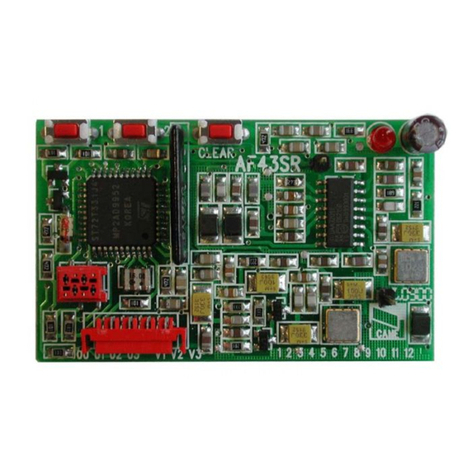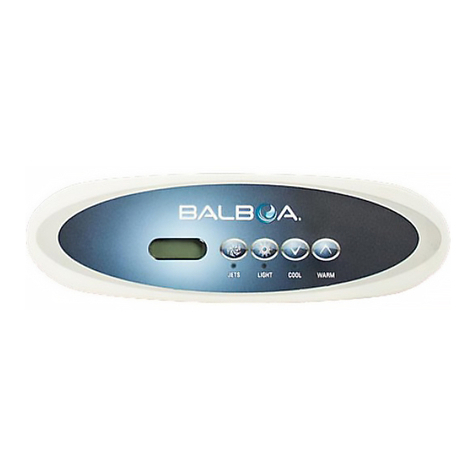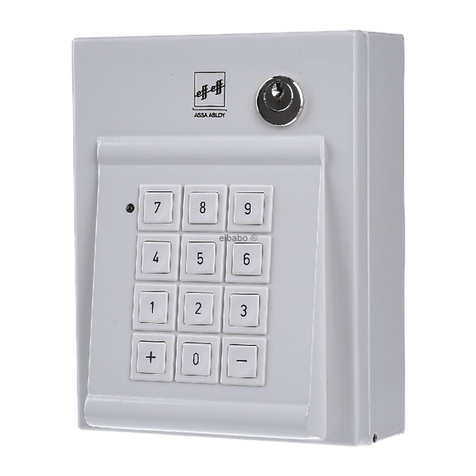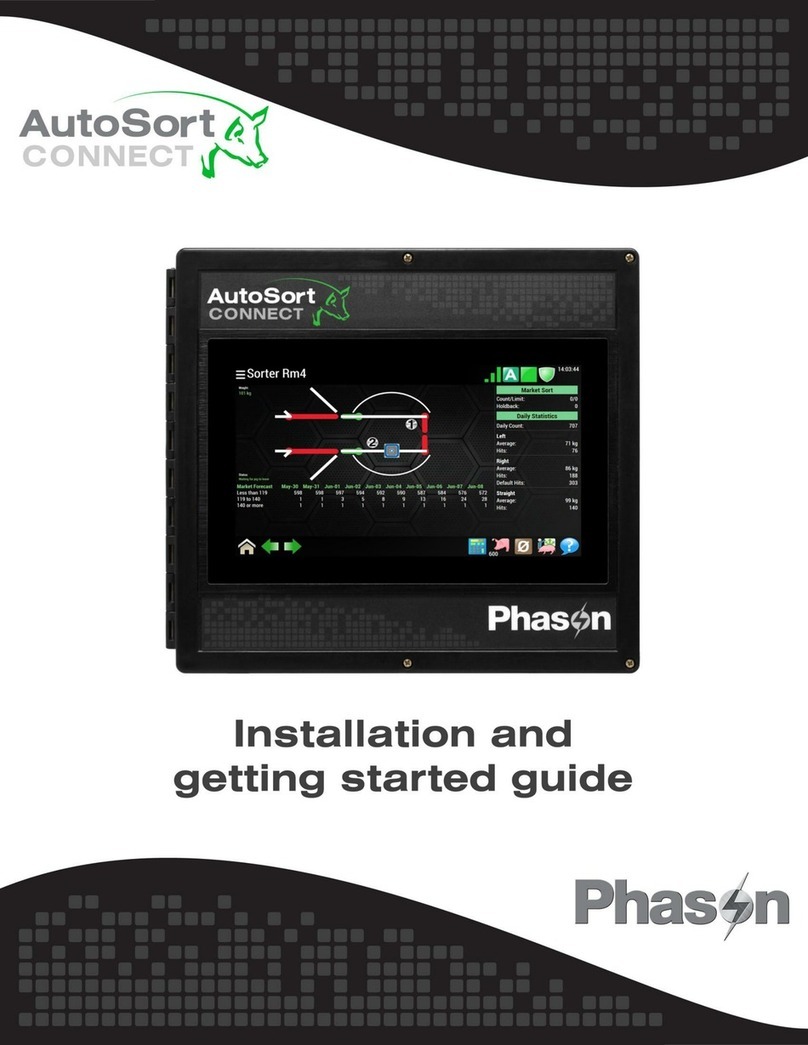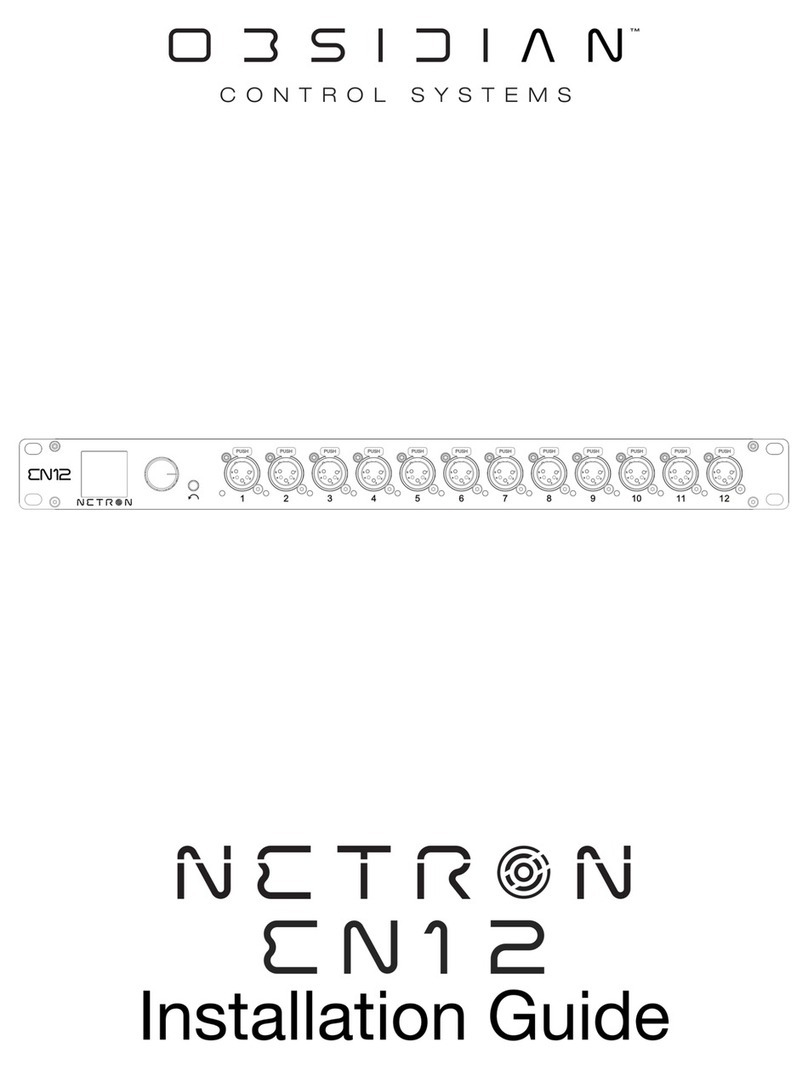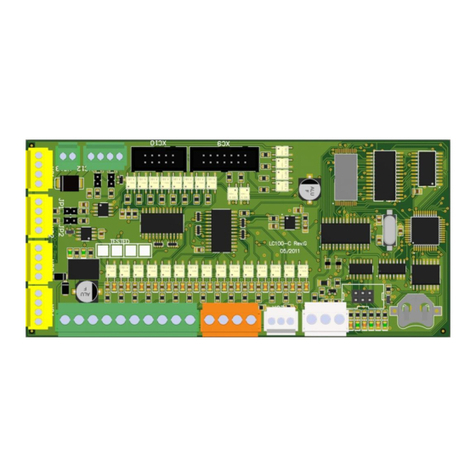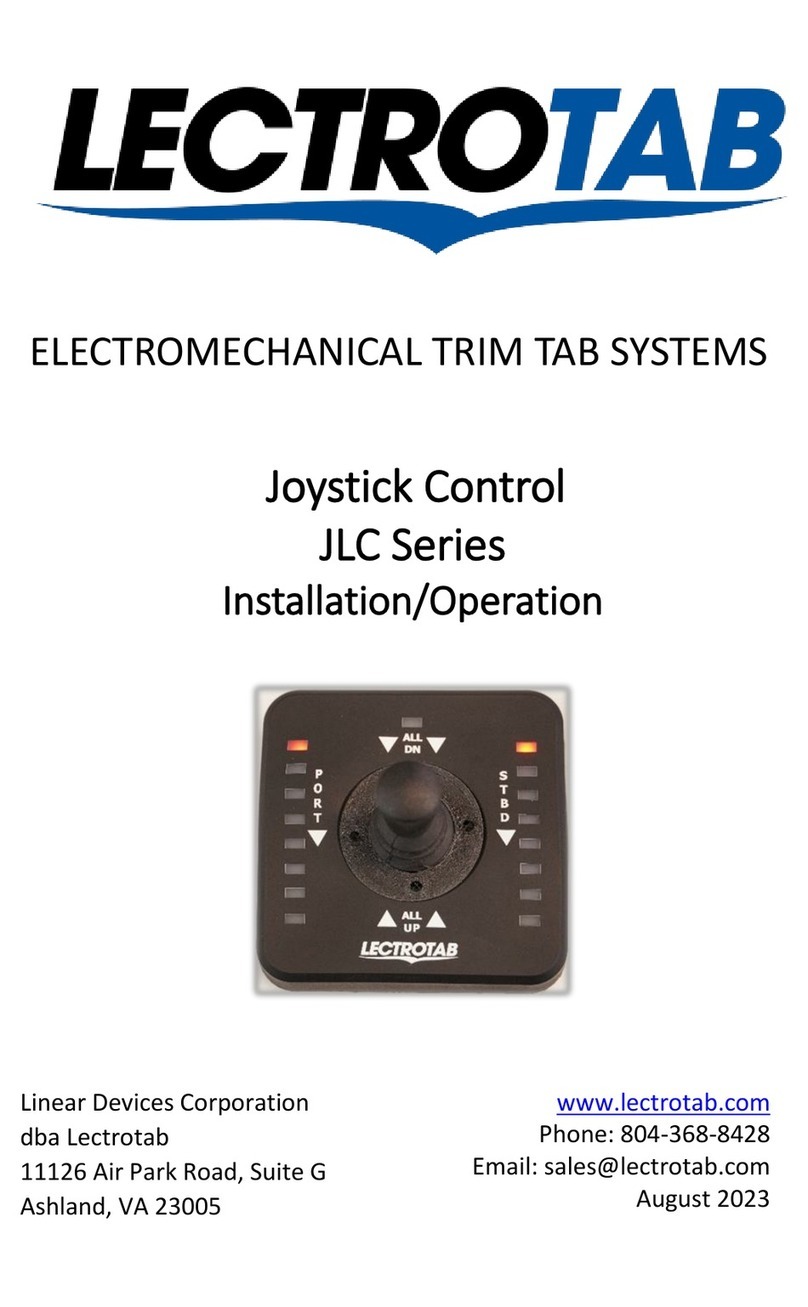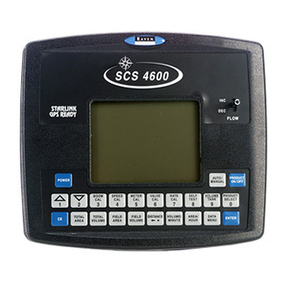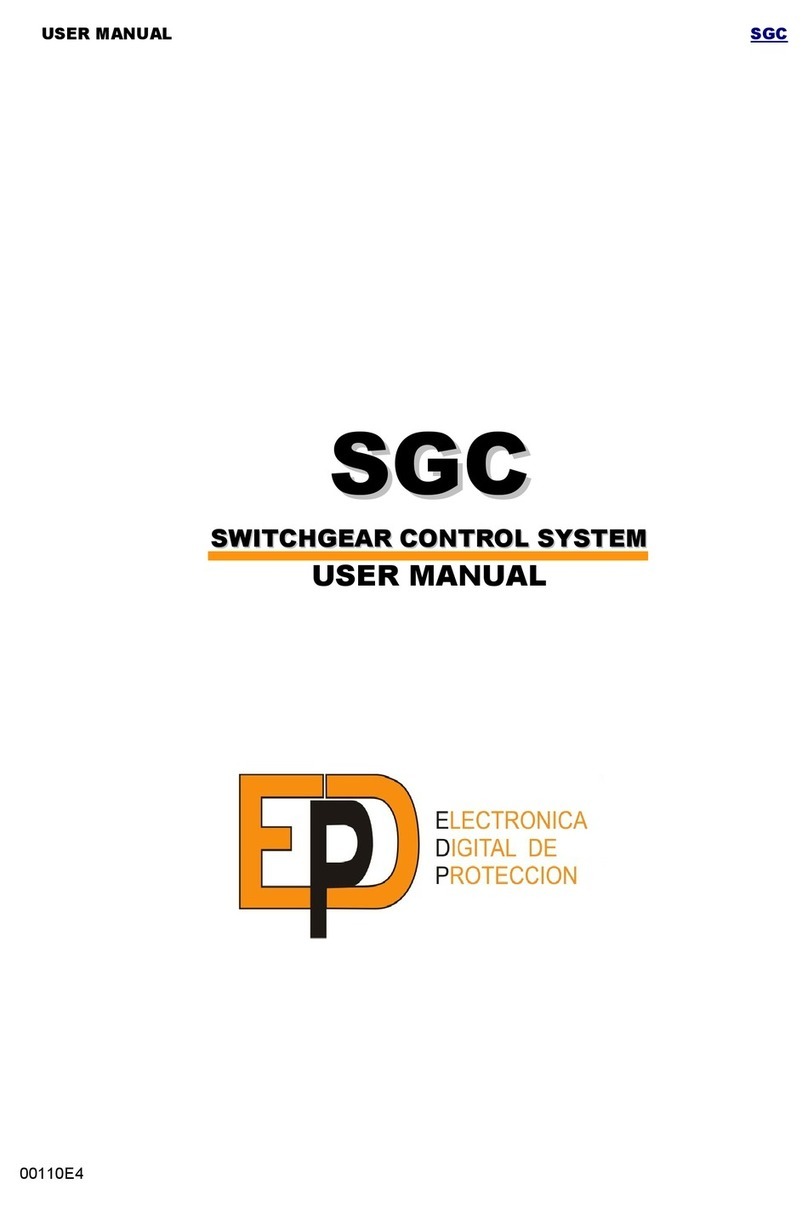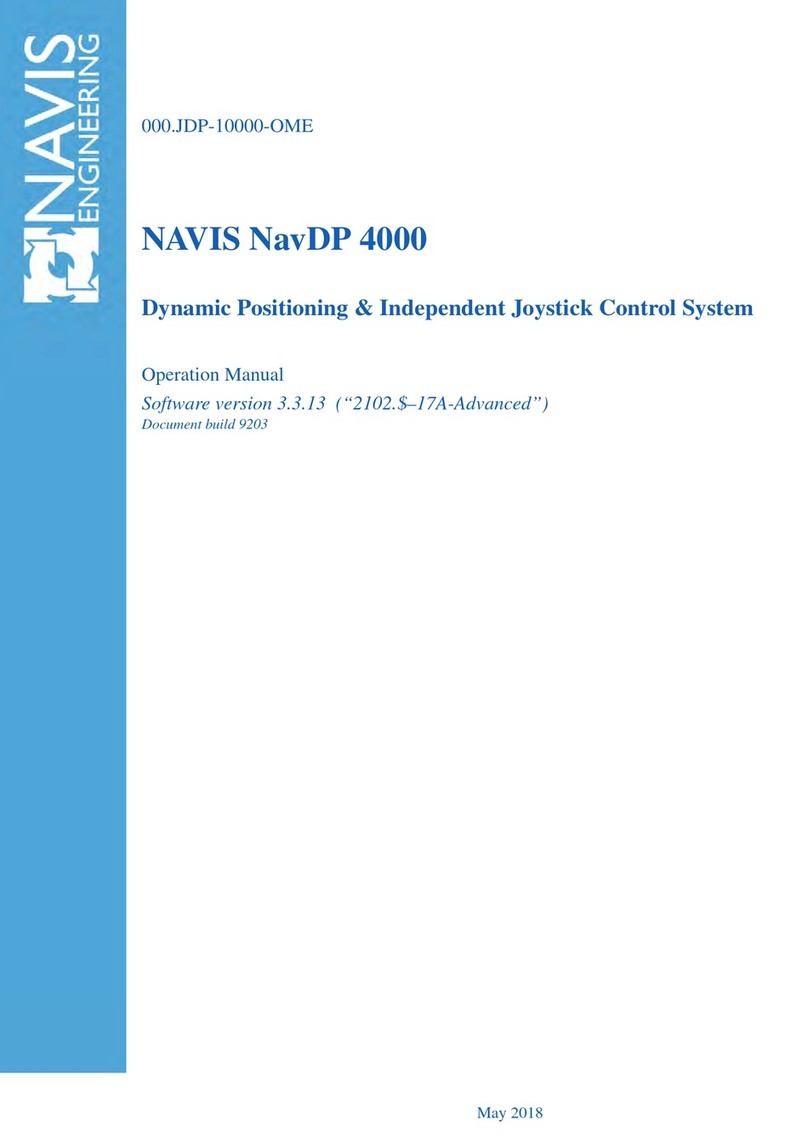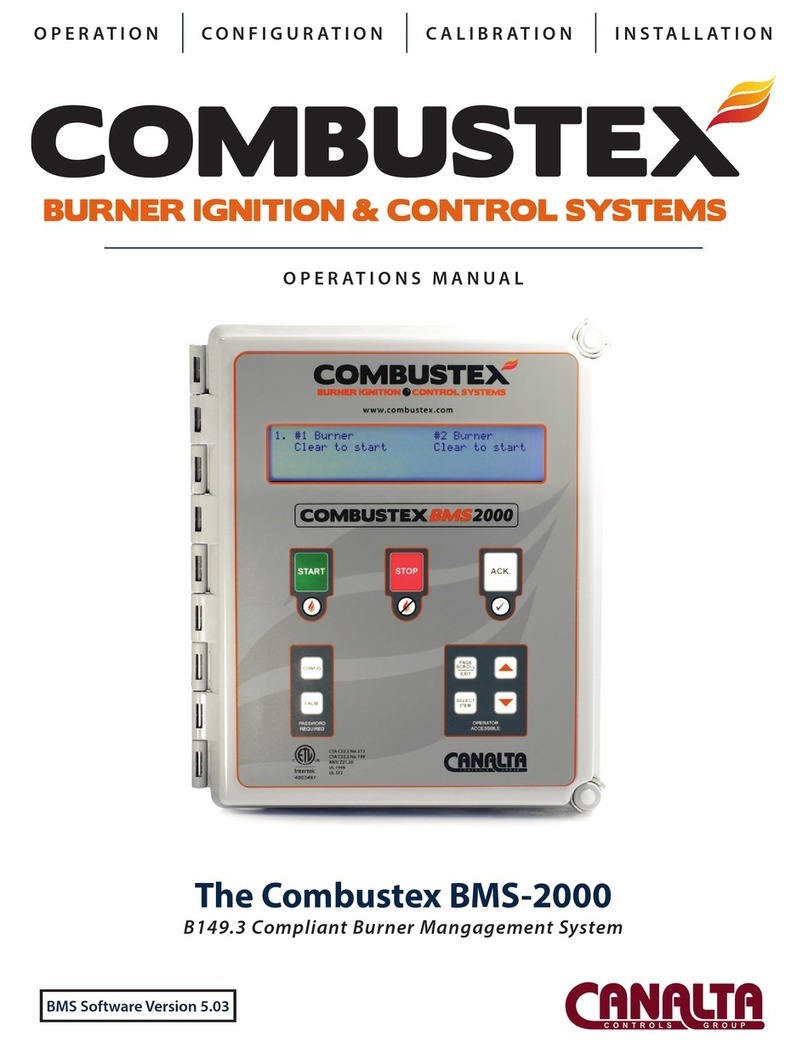Toptech MultiLoad II User manual

M
Mu
ul
lt
ti
iL
Lo
oa
ad
d
I
II
I
C
Co
om
mm
mu
un
ni
ic
ca
at
ti
io
on
ns
s
G
Gu
ui
id
de
e
I
In
nc
cl
lu
ud
di
in
ng
g:
:
M
Mu
ul
lt
ti
iL
Lo
oa
ad
d
I
II
I
M
Mu
ul
lt
ti
iL
Lo
oa
ad
d
I
II
I
S
SM
MP
P
M
Mu
ul
lt
ti
iL
Lo
oa
ad
d
I
II
I
S
SC
CS
S
M
Mu
ul
lt
ti
iL
Lo
oa
ad
d
I
II
I
M
Mo
ob
bi
il
le
e
Part # 6077
Firmware Version 3/4.31.38
February 2018

2
Copyright Notice
Copyright © 2000 –2018 Toptech Systems, Inc.
The information contained in this document is proprietary and confidential. No part of this document may be copied, reproduced, or
transmitted in any medium without the express written permission of Toptech Systems, Inc.
Disclaimer
Toptech Systems assumes no responsibility for damages resulting from installation or use of its products. Toptech Systems will not be liable
for any claims of damage, lost data, or lost time as a result of using its products.
Logos are registered trademarks of Toptech Systems, Inc.
Copyright © 2000-2018 Toptech Systems, Inc. All Rights Reserved.

3
Table of Contents
CHAPTER 1 PROTOCOL SPECIFICATION.....................................................................................................7
1.1 DEFINITIONS ............................................................................................................................................7
1.2 SMITH PROTOCOL ....................................................................................................................................8
1.3 BROOKS PROTOCOL.................................................................................................................................8
1.4 DANIELS PROTOCOL.................................................................................................................................8
1.5 MODBUS-RTU PROTOCOL........................................................................................................................9
1.5.1 Read Holding Registers (fn=3)..........................................................................................................9
1.5.2 Write Single Registers (fn=6).............................................................................................................9
1.5.3 Loopback/Maintenance (fn=8).........................................................................................................10
1.5.4 Preset Multiple Registers (fn=16)....................................................................................................10
1.5.5 Error Responses (fn= +128)............................................................................................................10
1.5.6 Modbus Register Map Summary.....................................................................................................11
1.5.7 Extended Services Register............................................................................................................11
1.6 MODBUS-TCP/IP PROTOCOL .................................................................................................................12
1.6.1 Read Holding Registers (fn=3)........................................................................................................13
1.6.2 Write Single Registers (fn=6)...........................................................................................................13
1.6.3 Loopback/Maintenance (fn=8).........................................................................................................13
1.6.4 Preset Multiple Registers (fn=16)....................................................................................................13
1.6.5 Error Responses (fn= +128)............................................................................................................14
1.6.6 Modbus Register Map Summary.....................................................................................................15
1.6.7 Extended Services Register............................................................................................................15
CHAPTER 2 MULTILOAD COMMAND RESPONSES ................................................................................... 16
CHAPTER 3 QUERY COMMAND:..................................................................................................................18
CHAPTER 4 FUNCTION COMMANDS:..........................................................................................................19
CHAPTER 5 TERMINAL COMMANDS:..........................................................................................................21
5.1 TERMINAL ESCAPE COMMANDS:..............................................................................................................21
CHAPTER 6 METER COMMANDS:................................................................................................................26
6.1 AUTHORIZE PRESET (PRODUCT AND PRESET VOLUME):...........................................................................26
6.2 CLEAR ALARMS:.....................................................................................................................................26
6.3 ENABLE PRESET ....................................................................................................................................26
6.4 END TRANSACTION.................................................................................................................................26
6.5 BATCH COMPLETE..................................................................................................................................27
6.6 BATCH END:...........................................................................................................................................27
6.7 END BATCH:...........................................................................................................................................27
6.8 PRESET MESSAGE: ................................................................................................................................28
6.9 PROVING TRANSACTION MODE:..............................................................................................................28
6.10 REQUEST STATUS &PRESET ALARMS:....................................................................................................29
6.11 REQUEST TANK STATUS &TANK ALARMS:...............................................................................................52
6.12 REQUEST SAMPLER STATUS &SAMPLER ALARMS:..................................................................................60
6.13 REQUEST SMP STATUS &PRESET ALARMS:...........................................................................................69
6.14 TRIP PRESET ALARMS:...........................................................................................................................69

4
6.15 REQUEST BAY ALARMS: .........................................................................................................................70
6.16 REQUEST COMPONENT ALARMS: ............................................................................................................71
6.17 REQUEST METER ALARMS:.....................................................................................................................72
6.18 REQUEST ADDITIVE ALARMS:..................................................................................................................73
6.19 REQUEST SAMPLER ALARMS: .................................................................................................................74
6.20 REQUEST TANK ALARMS:........................................................................................................................75
6.21 REMOTE TRANSACTION DATA:................................................................................................................76
6.22 START PRESET FLOW:............................................................................................................................77
6.23 STOP PRESET FLOW: .............................................................................................................................77
CHAPTER 7 REGISTER OPERATIONS:........................................................................................................78
7.1 GENERIC REGISTERS .............................................................................................................................79
7.1.1 Register Data Types........................................................................................................................79
7.1.2 000 –RCU Level Configuration Registers ......................................................................................91
7.1.3 100 –Bay Level Configuration Registers........................................................................................94
7.1.4 101 –Preset Level Configuration Registers....................................................................................95
7.1.5 102 –Meter Level Configuration Registers.....................................................................................99
7.1.6 103 –Component Level Configuration Registers..........................................................................103
7.1.7 104 –Additive Level Configuration Registers ...............................................................................106
7.1.8 108 –Trace Level Configuration Registers....................................................................................108
7.1.9 110 –Network Level Configuration Registers................................................................................108
7.1.10 111 –Tank Level Configuration Registers.................................................................................109
7.1.11 115 –Sampler Level Configuration Registers ...........................................................................110
7.1.12 116 –Security Level Configuration Registers............................................................................110
7.1.13 117 –Report Level Configuration Registers..............................................................................112
7.1.14 105 –Custom Logic Definitions Registers................................................................................113
7.1.15 107 –Custom Logic Value Registers........................................................................................128
7.1.16 200 –Stand Alone BOL Definition Registers............................................................................128
7.1.17 800 –Transaction Archive Registers........................................................................................132
7.2 SPECIAL PURPOSE REGISTERS.............................................................................................................134
7.2.1 000 –MultiLoad Firmware Version................................................................................................134
7.2.2 001 –Date and Time.....................................................................................................................134
7.2.3 003 –FCM Poll Rate .....................................................................................................................135
7.2.4 005 –Current BOL/Ticket Number................................................................................................135
7.2.5 070 –Ethernet Enable...................................................................................................................135
7.2.6 071 –IP Address...........................................................................................................................135
7.2.7 072 –IP Mask................................................................................................................................135
7.2.8 073 –IP Gateway..........................................................................................................................135
7.2.9 074 –IP Host.................................................................................................................................136
7.2.10 076 –ADMIN PASSWORD.......................................................................................................136
7.2.11 077 –USER PASSWORD ........................................................................................................136
7.2.12 085 –Modem Initialization String..............................................................................................136
7.2.13 091..093 –Communication Port Parameters............................................................................136
7.2.14 094 –095 Network Printer Number Of Copies .........................................................................137
7.2.15 112 - Real-Time Preset Total Gross Totalizers.........................................................................137
7.2.16 113 - Real-Time Preset Total Net Totalizers.............................................................................138

5
7.2.17 114 - Real-Time Preset Total Mass Totalizers..........................................................................138
7.2.18 120 - Real-Time Sampler Total Gross Totalizers......................................................................138
7.2.19 129 –FCM Low Level Meter Status..........................................................................................139
7.2.20 133 –FCM IO Access...............................................................................................................139
7.2.21 134 –Discrete Parameter Security settings..............................................................................140
7.2.22 135 –Group Parameter Security settings.................................................................................140
7.2.23 136 –Access Parameter Security settings ...............................................................................141
7.2.24 140 –Current Latitude/Longitude position Registers (MultiLoad Mobile Only) .........................142
7.2.25 141 –Current Transaction Latitude/Longitude/Site Index Registers (MultiLoad Mobile Only).142
7.2.26 400 - Preset Definition Registers ..............................................................................................142
7.2.27 401 –External Preset Display Register ....................................................................................143
7.2.28 402 –Tank Definition Register..................................................................................................143
7.2.29 500 - Product Definition Registers ............................................................................................144
7.2.30 600 - Standalone Driver Card Database...................................................................................144
7.2.31 605 Modbus Device Database..................................................................................................145
7.2.32 650 –GPS Site Database (MultiLoad Mobile Only)...................................................................145
7.2.33 700 - Configurable Language Prompts.....................................................................................146
7.2.34 710 - Bay Alarm Messages.......................................................................................................147
7.2.35 711 - Preset Alarm Messages...................................................................................................149
7.2.36 712 - Meter Alarm Messages....................................................................................................151
7.2.37 713 - Component Alarm Messages...........................................................................................153
7.2.38 714 - Additive Alarm Messages ................................................................................................155
7.2.39 716 - SamplerAlarm Messages.................................................................................................157
7.2.40 715 - TankAlarm Messages ......................................................................................................158
7.2.41 910 –Read Event Log Message Queue...................................................................................160
7.2.42 912 –Read W & M Change Log Message Queue....................................................................160
7.2.43 913 –Read AUDIT Log Message Queue .................................................................................160
7.2.44 950 - Current Driver Card Number............................................................................................161
7.2.45 951..955 - Current Driver Prompt Information...........................................................................161
7.2.46 960 –Input Data........................................................................................................................161
7.2.47 961 –Input Data Terminating Key ............................................................................................161
7.2.48 962 - Current Driver Card Data.................................................................................................162
7.2.49 998 –Bitmap Graphic Cache....................................................................................................163
CHAPTER 8 COMMUNICATION TRACE EXAMPLE...................................................................................164
8.1 STARTUP OF HOST SOFTWARE .............................................................................................................164
8.1.1 Update Date & Time......................................................................................................................164
8.1.2 Update Product Definitions............................................................................................................164
8.1.3 Update Preset Definitions..............................................................................................................165
8.1.4 Status Query..................................................................................................................................165
8.2 TRANSACTION AUTHORIZATION.............................................................................................................166
8.2.1 Process Driver Card In ..................................................................................................................166
8.2.2 Authorize a Transaction on MultiLoad...........................................................................................167
8.2.3 Reading Totalizers.........................................................................................................................167
8.3 BATCH AUTHORIZATION........................................................................................................................168
8.3.1 Authorize a Batch on MultiLoad.....................................................................................................168

6
8.3.2 Monitor Load During Delivery........................................................................................................170
8.4 END OF BATCH PROCESSING................................................................................................................170
8.4.1 Ending a Batch on MultiLoad.........................................................................................................170
8.5 END OF TRANSACTION PROCESSING.....................................................................................................171
8.5.1 Ending a Transaction on MultiLoad...............................................................................................171
8.6 SHUTDOWN OF HOST SOFTWARE..........................................................................................................171
CHAPTER 9 DATA COMMUNICATION NOTES AND RECOMMENDATIONS...........................................172
9.1 PROTOCOL SELECTION:RS-232 VS.RS-485........................................................................................172
9.1.1 RS-232...........................................................................................................................................172
9.1.2 RS-485...........................................................................................................................................172
9.2 CABLE SELECTION................................................................................................................................172
9.3 LINE TERMINATION IN MULTI-DROPPED COMMUNICATIONS .....................................................................172
9.4 OPTICAL ISOLATION..............................................................................................................................173
9.5 SHIELD GROUNDING.............................................................................................................................173
CHAPTER 10 PARAMETER ACCESS SECURITY....................................................................................174
10.1 UNDERSTANDING NEW USER AND SECURITY FEATURES .........................................................................174

Chapter 1 –Protocol Specification
7
CHAPTER 1 PROTOCOL SPECIFICATION
The MultiLoad auto-detects four low level computer protocols for host communications.
- Smith Protocol
- Brooks Protocol
- Daniels
- Modbus-RTU Protocol
- Modbus- TCP/IP Protocol
Note: All unknown or not allowed signal or code sequences are rejected and have no impact on the
software or measurement data.
Host communication can occur via multi-dropped RS-232/RS-485 serial on COM 1 or Ethernet 10/100 socket
communication on port 7734. Port 7735 supports SSL encryption (TLS v1.2 only for security reasons) and can
be enabled via the network setup screen.
1.1 DEFINITIONS
The non-printing characters that form the skeleton of the Smith and Brooks protocols are standard ASCII
(American Standard Code Information Interchange):
ASCII CHARACTER
DECIMAL
HEX
BINARY
NUL
0
0
00000000
STX
2
2
00000010
ETX
3
3
00000011
SOH
1
1
00000001
PAD
127
7F
01111111
CHARACTER
DESCRIPTION
BCC
Block Check Characters. The ASCII hex representation of the binary sum of all
the data in the message from the SOH through the ETX character.
LRC
Longitudinal Redundancy Check. The LRC is an ASCII character computed as
the exclusive or (XOR) sum of all characters following the STX and including
the ETX.
CRC
Cyclic Redundancy Check.
A1..A3
A 3-character ASCII unit address of the MultiLoad. Please refer to the
MultiLoad User Guide for configuring the unit address.
D1..Dn
Data field characters.
Fn
Function field code.
Adr
A single character binary unit address of the MultiLoad.

Chapter 1 –Protocol Specification
8
1.2 SMITH PROTOCOL
The Smith protocol is compatible with devices from Smith Meter, such as the Accuload I and Accuload II mini-
computer modes of operation. Using this protocol, MultiLoad accepts data in the format:
NUL
STX
A1
A2
data
ETX
LRC
PAD
A1 and A2 are the last two digits of the unit address in the RCU configuration.
1.3 BROOKS PROTOCOL
The Brooks protocol is compatible with devices from Brooks Instruments such as their Petrocount RAU™ and
IMS Control™ units running in computer mode. Using this protocol, MultiLoad accepts data in the format:
SOH DESTINATION SOURCE
A1 A2 A3 S1 S2 S3 STX data ETX BCC
1BCC
2
1.4 DANIELS PROTOCOL
The Daniels protocol is compatible with devices from Daniels Flow Products. Using this protocol, MultiLoad
accepts and responds with data in the format:
Quiet
Time
ADR
FN
LEN
(2 –252)
D1...DN
CRC1
CRC2
Quiet
Time
Daniels protocol messages are framed by a quiet time of three and one-half characters.
ADR is binary character of the address of the MultiLoad. Typically 0x01.
Fn is expected to be 0x41/0x42 alternating on each command. Responses will have Fn as 0x41/0x42
for normal responses and 0xc1/0xc2 for exception responses.
D1…Dn is string data containing the commands listed in this manual.
Note: Modbus extension to return larger packet sizes: On messages with data packet sizes from 2 to 252
characters the Fn values of 0x41/0x42 will be returned. With messages outside this range, Fn will be the MSB
value of the data size and the Len will be LSB of the data size.
For Example:
Fn = 0x41, Len = 0x80, when data packet size = 0x0080,
Fn = 0x42, Len = 0x80, when data packet size = 0x0080,
Fn = 0x00, Len = 0xFF, when data packet size = 0x00FF ( 255),
Fn = 0x01, Len = 0x00, when data packet size = 0x0100 ( 256),
Fn = 0x01, Len = 0x01, when data packet size = 0x0101 ( 257),
Fn = 0x02, Len = 0x00, when data packet size = 0x0200 ( 512),
Fn = 0x04, Len = 0x00, when data packet size = 0x0400 (1024),
Fn = 0x08, Len = 0x00, when data packet size = 0x0800 (2048).

Chapter 1 –Protocol Specification
9
1.5 MODBUS-RTU PROTOCOL
The Modbus-RTU protocol has been implemented to be as compatible as possible with the original published
Modicon Modbus-RTU standard.
Note: The Modbus protocol allows parameter register access only as defined by the explicit mapping in
this manual. To send the ASCII commands (R000, T`A, MAM, MRS, etc.) that are handled by the other
three protocols, the Modbus Extended Services registers must be used.
Using the Modbus protocol, MultiLoad accepts data in the following format:
Quiet
Time
ADR
FN
...
CRC1
CRC2
Quiet
Time
Modbus-RTU protocol messages are framed by a quiet time of three and one-half characters.
ADR is binary character of the address of the MultiLoad. Typically 0x01.
Fn is the Modbus function. Functions implemented are as follows.
The formal specification of Modbus lists the starting Holding Register address as 40001. The Modbus
Holding Register functions (Fn 3, 6 and 16) all have an implied 4XXXX reference. Referencing Holding
Register 40001 is addressed as register 0000 in the register address field in the message for fn 3, 6, and
16.
Since Modbus addressing has been implemented in various ways over the years, to avoid confusion in
this manual, the Modbus Holding Register addresses listed are the value in the register address field in
the message. If it is necessary to know the formal Modbus Holding Register address, simply add 40001
to the register addresses listed in the manual.
1.5.1 READ HOLDING REGISTERS (FN=3)
Note: Both Modbus registers MUST be read at the same time when reading 32-bit values.
Tx:
Quiet Time
ADR
FN=3
Start
Register
MSB
Start
Register
LSB
Number
Of
Registers
MSB
Number
of
Registers
LSB
CRC1
CRC2
Quiet Time
Rx:
Quiet
Time
ADR
FN=3
(+128 if
error)
Byte
Count
1st
Register
MSB
1st
Register
LSB
Next
Register
MSB
Next
Register
MSB
…
CRC1
CRC2
Quiet
Time
1.5.2 WRITE SINGLE REGISTERS (FN=6)
Note: cannot be used for 32-bit registers.
Tx:
Quiet Time
ADR
FN=6
Start
Register
MSB
Start
Register
LSB
Register
MSB
Register
LSB
CRC1
CRC2
Quiet Time
Rx:
Quiet Time
ADR
FN=6
(+128 if
error)
Start
Register
MSB
Start
Register
LSB
Register
MSB
Register
LSB
CRC1
CRC2
Quiet Time

Chapter 1 –Protocol Specification
10
1.5.3 LOOPBACK/MAINTENANCE (FN=8)
Note: only loopback of command supported.
Tx:
Quiet Time
ADR
FN=8
Diagnostic
Code MSB
Diagnostic
Code LSB
Data MSB
Data LSB
CRC1
CRC2
Quiet Time
Rx:
Quiet Time
ADR
FN=8
Diagnostic
Code MSB
Diagnostic
Code LSB
Data MSB
Data LSB
CRC1
CRC2
Quiet Time
1.5.4 PRESET MULTIPLE REGISTERS (FN=16)
Note: Both Modbus registers MUST be written at the same time when writing 32-bit values.
Tx:
Quiet
Time
ADR
FN=16
Start
Register
MSB
Start
Register
LSB
Number
Of
Registers
MSB
Number
of
Registers
LSB
Byte
Count
1st
Register
MSB
1st
Register
LSB
Next
Register
MSB
Next
Register
MSB
…
CRC1
CRC2
Quiet
Time
Rx:
Quiet Time
ADR
FN=16
(+128 if
error)
Start
Register
MSB
Start
Register
LSB
Number
Of
Registers
MSB
Number
of
Registers
LSB
CRC1
CRC2
Quiet Time
1.5.5 ERROR RESPONSES (FN=+128)
Rx:
Quiet Time
ADR
FN+128
Error
Subcode
CRC2
CRC1
Error Sub codes are:
1 = Invalid Function Code. Indicates that the use of an invalid or unimplemented function has been
attempted.
2 = Invalid Address Field. Indicates that a read or write was made to an invalid address. Can also
indicate that a read or write to a single register of a 32-bit value has been attempted.
3 = Invalid Data Field. Indicates that an attempt to write an invalid value to a register has occurred.
This error code will also be returned if an attempt is made to change a value under Weights and Measures
control without with W&M switch being in the active state.
4 = Query Processing Failure. This code is not returned.

Chapter 1 –Protocol Specification
11
1.5.6 MODBUS REGISTER MAP SUMMARY
1 –999 General, BOL Template, Misc. Configurations.
1000 –1199 RCU Configurations
1200 –1399 Bay Configurations
1400 –1599 Preset Configurations
1600 –1799 Meter Configurations
1800 –1999 Component Configurations
2000 –2199 Additive Configurations
2200 –2999 Product, Alarm, Database, Misc. Configurations
3000 –3999 Totalizers
4000 –6000 Preset, Meter, Component and Additive Status
7000 –7799 Status, Authorization Control and Alarms
7800 –7999 Transaction Archive
8000 –8999 Preset Definitions
9000-10999 Extended Services Register
Note: Tank and Sampler level is not available at the moment for Modbus. Use the custom logic mapping
tool for this.
1.5.7 EXTENDED SERVICES REGISTER
Not all commands native to the MultiLoad II have corresponding mapping to Modbus registers. The Extended
Services register was implemented as a way to support sending and receiving native Multiload II commands
across the Modbus RTU interface. Any native command listed can be sent to the MultiLoad via the extended
Services Register.
Modbus Registers:
Write Holding Register=9000, Len=1, 16-Bit Integer (Command Length)
Write Holding Register=9001, Max Len=999, Characters (Command Text)
Read Holding Register=9000, Len=2, 32-Bit Integer (Reply Length)
Read Holding Register=9001, Max Len=999, Characters (Reply Text)
Perform the following operations to use of the Extended Services Register:
1. Write the Command Length into the Holding Register 9000 (max value of 999 characters).
2. Write the Command Text into the Holding Register 9001 (max length of 999).
3. Command will execute when the final character of the Command Text is written (9001+Command
Length-1).
4. Read the Reply Length from the Holding Register 9000 (max value of 999 characters).
5. Read the Reply Text from the Holding Register 9001 (max length of 999).
Steps 1 & 2 can be done with a single Modbus Function 16.
Steps 4 & 5 can be done with a single Modbus Function 3.

Chapter 2 –MultiLoad Responses
12
1.6 MODBUS-TCP/IP PROTOCOL
The Modbus-TCP/IP protocol has been implemented to be as compatible as possible with the original published
Modbus-TCP/IP standard v1.0b.
Note: The Modbus protocol allows parameter register access only as defined by the explicit mapping in
this manual. To send the ASCII commands (R000, T`A, MAM, MRS, etc.) that are handled by the other
three protocols, the Modbus Extended Services registers must be used.
Using the Modbus tcp/ip-protocol, MultiLoad accepts data in the following format:
MBAP
FN
DATA
Modbus-TCP/IP protocol messages are framed by a MBAP-Header.
Fields
Length
Description
Client
Server
Transaction
Identifier
2 Bytes
Identification of a
MODBUS Request/
Response
transaction.
Initialized by the
client
Recopied by the
server from the
received request
Protocol Identifier
2 Bytes
0 = Modbus
Protocol
Initialized by the
client
Recopied by the
server from the
received request
Length
2 Bytes
Number of following
bytes
Initialized by the
client (request)
Initialized by the
server (Response)
Unit Identifier
1 Byte
Identification of a
remote slave
connected on a
serial line or on
other buses
Initialized by the
client
Recopied by the
server from the
received request
The header is 7 bytes long:
Transaction Identifier - It is used for transaction pairing, the MODBUS server copies in the response the
transaction identifier of the request.
Protocol Identifier –It is used for intra-system multiplexing. The MODBUS protocol is identified by the value 0.
Length - The length field is a byte count of the following fields, including the Unit Identifier and data fields.
Unit Identifier –This field is used for intra-system routing purpose. It is typically used to communicate to a
MODBUS+ or a MODBUS serial line slave through a gateway between an Ethernet TCP-IP network and a
MODBUS serial line. This field is set by the MODBUS Client in the request and must be returned with the same
value in the response by the server.
All MODBUS/TCP ADU are sent via TCP to registered port 502.
Remark : the different fields are encoded in Big-endian.
Fn is the Modbus function. Functions implemented are as follows.
The formal specification of Modbus lists the starting Holding Register address as 40001. The Modbus
Holding Register functions (Fn 3, 6 and 16) all have an implied 4XXXX reference. Referencing Holding
Register 40001 is addressed as register 0000 in the register address field in the message for fn 3, 6, and
16.

Chapter 2 –MultiLoad Responses
13
Since Modbus addressing has been implemented in various ways over the years, to avoid confusion in
this manual, the Modbus Holding Register addresses listed are the value in the register address field in
the message. If it is necessary to know the formal Modbus Holding Register address, simply add 40001
to the register addresses listed in the manual.
1.6.1 READ HOLDING REGISTERS (FN=3)
Note: Both Modbus registers MUST be read at the same time when reading 32-bit values.
Tx:
MBAP
FN=3
Start
Register
MSB
Start
Register
LSB
Number
Of
Registers
MSB
Number
of
Registers
LSB
Rx:
MBAP
FN=3
(+128 if
error)
Byte
Count
1st
Register
MSB
1st
Register
LSB
Next
Register
MSB
Next
Register
MSB
…
1.6.2 WRITE SINGLE REGISTERS (FN=6)
Note: cannot be used for 32-bit registers.
Tx:
MBAP
FN=6
Start
Register
MSB
Start
Register
LSB
Register
MSB
Register
LSB
Rx:
MBAP
FN=6
(+128 if
error)
Start
Register
MSB
Start
Register
LSB
Register
MSB
Register
LSB
1.6.3 LOOPBACK/MAINTENANCE (FN=8)
Note: only loopback of command supported.
Tx:
MBAP
FN=8
Diagnostic
Code MSB
Diagnostic
Code LSB
Data MSB
Data LSB
Rx:
MBAP
FN=8
Diagnostic
Code MSB
Diagnostic
Code LSB
Data MSB
Data LSB
1.6.4 PRESET MULTIPLE REGISTERS (FN=16)
Note: Both Modbus registers MUST be written at the same time when writing 32-bit values.
Tx:
MBAP
FN=16
Start
Register
MSB
Start
Register
LSB
Number
Of
Registers
MSB
Number
of
Registers
LSB
Byte
Count

Chapter 2 –MultiLoad Responses
14
1st
Register
MSB
1st
Register
LSB
Next
Register
MSB
Next
Register
MSB
…
Rx:
MBAP
FN=16
(+128 if
error)
Start
Register
MSB
Start
Register
LSB
Number
Of
Registers
MSB
Number
of
Registers
LSB
1.6.5 ERROR RESPONSES (FN=+128)
Rx:
MBAP
FN+128
Error
Subcode
Error Sub codes are:
1 = Invalid Function Code. Indicates that the use of an invalid or unimplemented function has been
attempted.
2 = Invalid Address Field. Indicates that a read or write was made to an invalid address. Can also
indicate that a read or write to a single register of a 32-bit value has been attempted.
3 = Invalid Data Field. Indicates that an attempt to write an invalid value to a register has occurred.
This error code will also be returned if an attempt is made to change a value under Weights and Measures
control without with W&M switch being in the active state.
4 = Query Processing Failure. This code is not returned.

Chapter 2 –MultiLoad Responses
15
1.6.6 MODBUS REGISTER MAP SUMMARY
1 –999 General, BOL Template, Misc. Configurations.
1000 –1199 RCU Configurations
1200 –1399 Bay Configurations
1400 –1599 Preset Configurations
1600 –1799 Meter Configurations
1800 –1999 Component Configurations
2000 –2199 Additive Configurations
2200 –2999 Product, Alarm, Database, Misc. Configurations
3000 –3999 Totalizers
4000 –6000 Preset, Meter, Component and Additive Status
7000 –7799 Status, Authorization Control and Alarms
7800 –7999 Transaction Archive
8000 –8999 Preset Definitions
9000-10999 Extended Services Register
1.6.7 EXTENDED SERVICES REGISTER
Not all commands native to the MultiLoad II have corresponding mapping to Modbus registers. The Extended
Services register was implemented as a way to support sending and receiving native Multiload II commands
across the Modbus TCP/IP interface. Any native command listed can be sent to the MultiLoad via the extended
Services Register.
Modbus Registers:
Write Holding Register=9000, Len=1, 16-Bit Integer (Command Length)
Write Holding Register=9001, Max Len=999, Characters (Command Text)
Read Holding Register=9000, Len=2, 32-Bit Integer (Reply Length)
Read Holding Register=9001, Max Len=999, Characters (Reply Text)
Perform the following operations to use of the Extended Services Register:
6. Write the Command Length into the Holding Register 9000 (max value of 999 characters).
7. Write the Command Text into the Holding Register 9001 (max length of 999).
8. Command will execute when the final character of the Command Text is written (9001+Command
Length-1).
9. Read the Reply Length from the Holding Register 9000 (max value of 999 characters).
10. Read the Reply Text from the Holding Register 9001 (max length of 999).
Steps 1 & 2 can be done with a single Modbus Function 16.
Steps 4 & 5 can be done with a single Modbus Function 3.

Chapter 2 –MultiLoad Responses
16
CHAPTER 2 MULTILOAD COMMAND RESPONSES
<command_status> <rcu_status> <card_status> <command specific response data>
For MultiLoad to acknowledge a message two conditions must be met. First the message must fit the Message
Framing Protocol with a valid LRC, BCC or CRC. Second, the address specified in the first two characters of
the command must match the configured MultiLoad address. Any message that satisfies both of these
requirements will be sent a response.
Modbus:
If using the Modbus protocol, the Modbus Extended Services Registers must be used to pass in
these ASCII string commands.
The first three characters of every response will contain command, RCU and card status data as defined below.
enum
{
VALID_COMMAND = ‘0’,
INVALID_PARAMETER = ‘1’,
INVALID_COMMAND = ‘2’
} command_status;
enum
{
IDLE = '0',
AUTH_BAY = 4',
MENU_MODE = '9',
DIAG_MODE = '%',
AUTHORIZING_LOAD = 'A',
LOAD_AUTHORIZED = 'B',
COMPLETING_LOAD = 'C',
TRANSACTION_DONE = 'D',
TRANSACTION_CANCEL = 'E',
PULLING_TRANSACTION = 'P',
ARCHIVING_TRANSACTION = 'R',
TRANSACTION_AUTHORIZED = 'T',
RCU_NOT_CONFIGURED = '?',
RCU_POWER_UP = '!',
INITIALIZING = 'I',
NO_TRANSACTION = 'N',
REMOTE_AUTH_PRESET1 = 'a',
REMOTE_AUTH_PRESET2 = 'b',
REMOTE_AUTH_PRESET3 = 'c',
REMOTE_AUTH_PRESET4 = 'd',
REMOTE_AUTH_PRESET5 = 'e',
REMOTE_AUTH_PRESET6 = 'f',

Chapter 2 –MultiLoad Responses
17
REMOTE_AUTH_PRESET7 = 'g',
REMOTE_AUTH_PRESET8 = 'h',
REMOTE_AUTH_PRESET9 = 'i',
REMOTE_AUTH_PRESET10 = 'j',
REMOTE_AUTH_PRESET11 = 'k',
REMOTE_AUTH_PRESET12 = 'l',
REMOTE_AUTH_PRESET13 = 'm',
REMOTE_AUTH_PRESET14 = 'n'
} rcu_status;
Modbus:
Read Only Register=7000, Len=1, Character (rcu_status)
enum
{
CARD_NOT_INSERTED =’0’,
CARD_INSERTED =’1’,
CARD_SECOND_INSERTED =’2’
} card_status;
Modbus:
Read Only Register=7001, Len=1, Character (card_status)
In most cases a command will return additional information specific to the command. This information will
always follow the three status characters. For example if the following valid command to read the current
firmware version is sent:
Command => Response
R000 => 0?0000MultiLoad II v3.31.xx Jan xx 2014
With “0?0” as the three status characters and “000MultiLoad II v3.31.xx Jan xx 2014” as the command specific
response.

Chapter 3 –Query Command
18
CHAPTER 3 QUERY COMMAND:
Query Command => Response
Q => 0?0XXXX
Where:
XXXX = 4 digit hexadecimal number with bits representing the rcu_status as:
union
{
unsigned int value;
struct
{
unsigned char rcu_trans_header:1;
unsigned char proving_mode:1;
unsigned char power_up:1; // indicated system has been powered on
unsigned char configured:1; // indicates configuration state
unsigned char unassigned_keypress_on_load_screen:1;
unsigned char logmsg_queued:1; // a log message is available
unsigned char unused6:1;
unsigned char audit_logmsg_queued:1; // a audit message is available
unsigned char wm_logmsg_queued:1; // a w&m log message is available
unsigned char host_up:1; // host system is up, card in will be allowed.
Unsigned char input_in_progress:1;
unsigned char input_done:1;
unsigned char keypad_locked :1; // is keypad locked or not
unsigned char reserved13:1;
unsigned char wm_key:1; // W&M key is active
unsigned char program_key:1; // Program key is active
} flags;
} rcu_status;
This command also resets the Host Down Timer and should be issued periodically to notify MultiLoad that the
Host is still active.
Modbus:
Read Only Register=7002, Len=1, 16-Bit Integer (XXXX)

Chapter 4 –Function Commands
19
CHAPTER 4 FUNCTION COMMANDS:
FREBOOT = Performs a software reboot of the MultiLoad RCU.
FFACTORY = Restores all MultiLoad registers to factory defaults.
FUPDATEAPPFLASH = Updates the Flash with an uploaded image (req. W&M and a valid image)
Modbus:
Supported through Modbus Extended Services Registers.
FKEYPADON = Enables the keypad on the MultiLoad RCU (default it is active)
FKEYPADOFF = Disables the keypad on the MultiLoad RCU
Write Only Register=7008, Len=1, 16-Bit Integer (any value=FKEYPADON)
Write Only Register=7009, Len=1, 16-Bit Integer (any value=FKEYPADOFF)
FUNCONFIG = Clears the configured RCU status bit.
FRECONFIG = Sets the configured RCU status bit.
Modbus:
Write Only Register=7010, Len=1, 16-Bit Integer (any value=FUNCONFIG)
Write Only Register=7011, Len=1, 16-Bit Integer (any value=FRECONFIG)
FPOWERUP = Resets the power_up RCU status bit. This bit is set on power up.
Modbus:
Write Only Register=7012, Len=1, 16-Bit Integer (any value=FPOWERUP)
FHOSTUP = Sets the host_up RCU status bit. Cleared on power up or when host down
timeout expires between Q commands. Command should be issued when host
system starts communicating with MultiLoad.
Modbus:
Write Only Register=7013, Len=1, 16-Bit Integer (any value=FHOSTUP)
FHOSTDOWN = Clears the host_up RCU status bit. Command should be issued when host
system stops communicating with MultiLoad.
Modbus:
Write Only Register=7014, Len=1, 16-Bit Integer (any value=FHOSTDOWN)
FHOSTWAIT = Bypass host down timer once with alternate timeout.
Modbus:
Write Only Register=7015, Len=1, 16-Bit Integer (any value=FHOSTUP)
FEODLOG = Prints EOD-Report for all totalizers type by arm and also gives the throughput
between the feodlog commands
Modbus:
Write Only Register=7018, Len=1, 16-Bit Integer (any value=FEODLOG)

Chapter 4 –Function Commands
20
FPccc…. = Send ccc… characters to the attached printer port (if defined).
FCLEARPROD = Clear all product definitions (500 register) except for the 000-Unknown Product
definition.
FCLEARID = Clear Access ID and PIN database.
FCLEARCUSTOM = Clears all custom logic entries.
FCLEARAUDITLOG = Clear Audit Log Messages stored in Multiload.
Modbus:
Supported through Modbus Extended Services Registers.
Other manuals for MultiLoad II
1
Table of contents
Popular Control System manuals by other brands
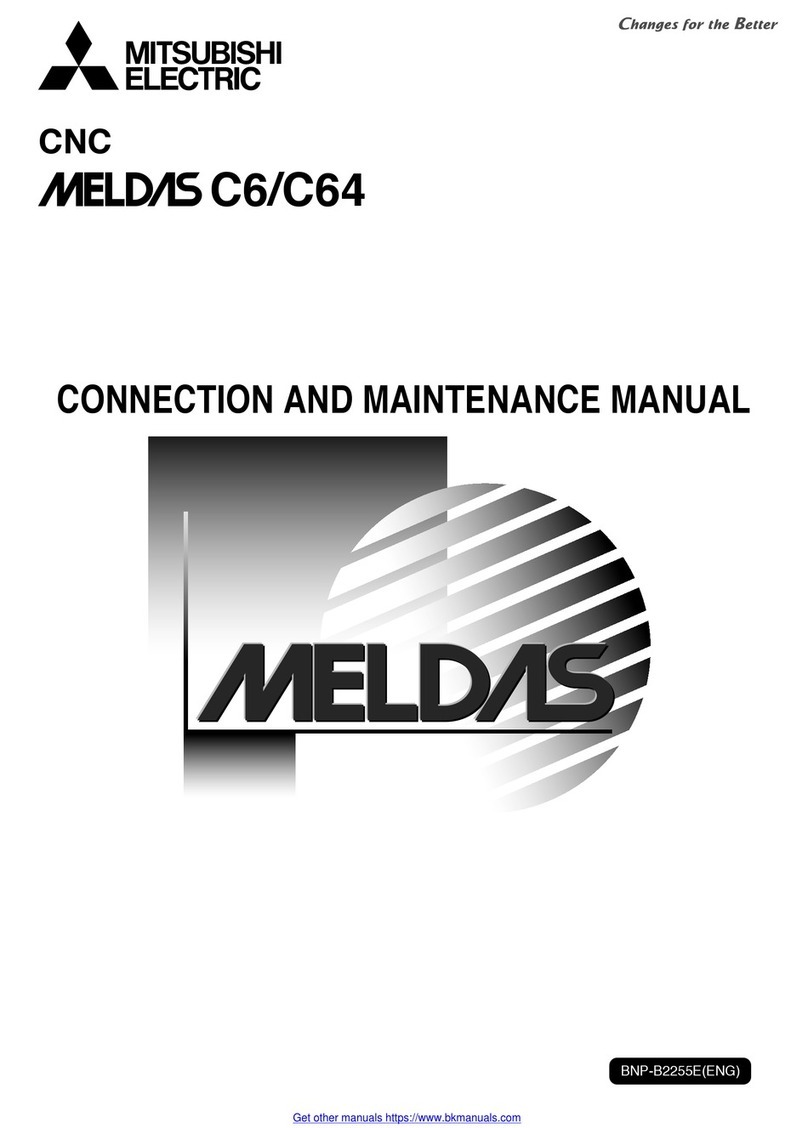
Mitsubishi Electric
Mitsubishi Electric MELDAS C6 Maintenance manual
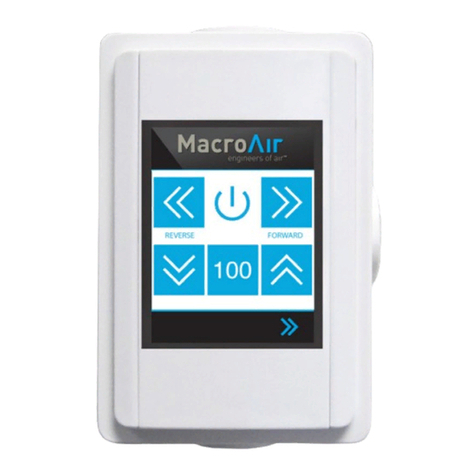
MacroAir Technologies
MacroAir Technologies Controller 4 Operation manual

Deif
Deif DELOMATIC 4 Series Replacement instructions

Swift
Swift EC800 manual

Omron
Omron SMARTSLICE GRT1-ML2 Hardware reference manual

HALE
HALE SAM GENERATION 2 quick start guide
